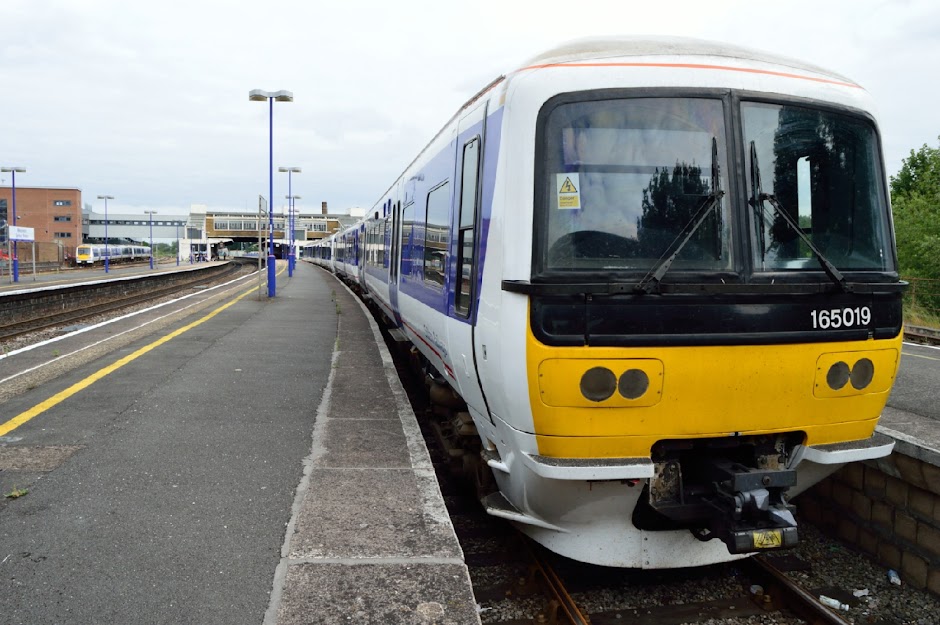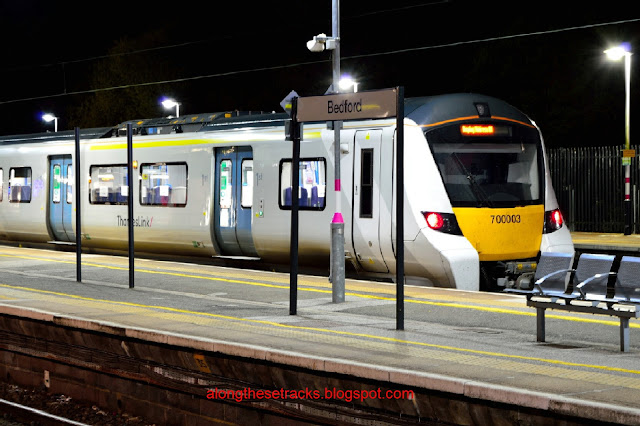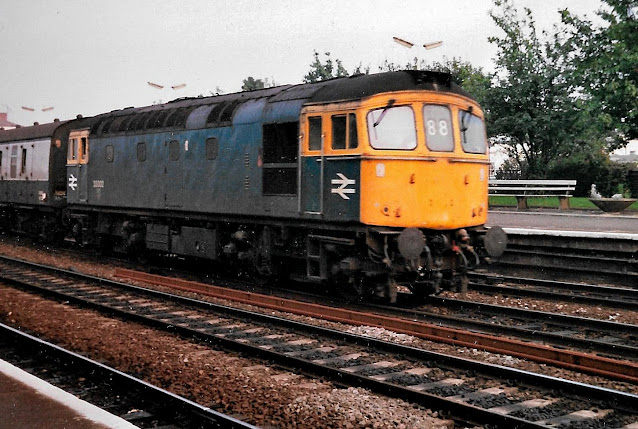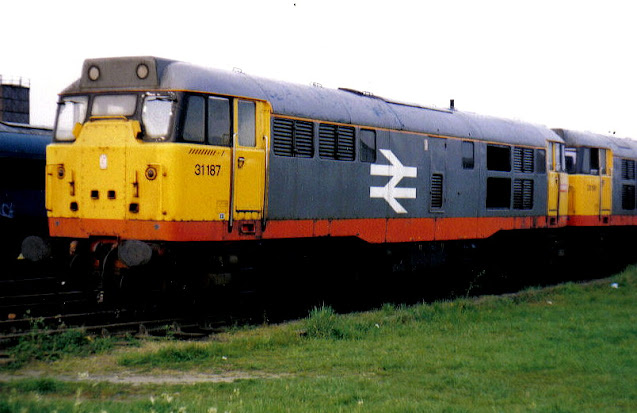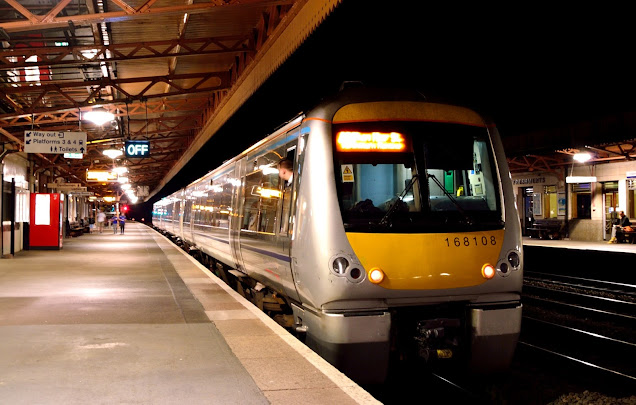 |
| Class 442 EMU Basingstoke Photo: Charles Moorhen |
Photo of unidentified Class 442 'Wessex' 5-Car electric multiple unit, in Network SouthEast livery, about to pass Basingstoke signal box before entering the station with a scheduled service from London Waterloo on an overcast day in the early 1990s.
Nicknamed the 'Plastic Pigs' by rail enthusiasts, due to the amount of plastic used in the construction, the Class 442 EMU was introduced by NetworkSouthEast on the line between London Waterloo and Weymouth in 1988.
Twenty four five-car units were manufactured by British Rail Engineering at its Derby Litchurch Lane Works.
In 1988 the Class 442 had the honour of entering railway history books for holding the world speed record for a third-rail 'Contact Shoe' (DC) train when, on the 11th April that year, it reached a speed of 108 mph (174 km/h). Impressive for a train that was designed with a maximum speed of 100 mph.
Operated by South West Trains after privatisation, the units were replaced with Desiro UK Class 444 and Class 450 EMUs in February 2007.
Following a period of storage, the 442s once again saw service, this time on the Gatwick Express services from London Victoria to Gatwick Airport and Brighton.
In 2016 the units were withdrawn from this route.
 | |
| Class 442412 EMU on Gatwick Express Duties |
Eventually the units were put into storage where they remain at present, although there has been talk that they may be used once again for mainline running. Time will tell on that one.
The eventual fate of the Class 442 EMU:
In January 2020, 'Global Railway Review' magazine reported that South Western Railway (SWR) had reintroduced four of its 10-car Class 442 trains, running on the London - Portsmouth and London - Poole routes.
However, in April 2021 'Modern Railways Magazine' reported that SWR's reintroduction plans for the Class 422 units had been abandoned. The reason cited was "lack of demand".
An SWR Engineering spokesman stated that six of the 24 '442s' had already been sold, donated or scrapped by Angel Trains. The spokesman went on to say that with no future prospective use for them, all remaining units will be sold for scrap.
442s Scrapped or Used For Spares:
No. 2401 stripped for spares at Eastleigh Works, for scrapping 7/2020.
No. 2405 coach number 62944, scrapped at Eastleigh 5/2020.
No. 2421 stripped for spares at Eastleigh Works, for scrapping 7/2020.
No. 2424 coach number 62960 scrapped at Eastleigh 5/2020.
